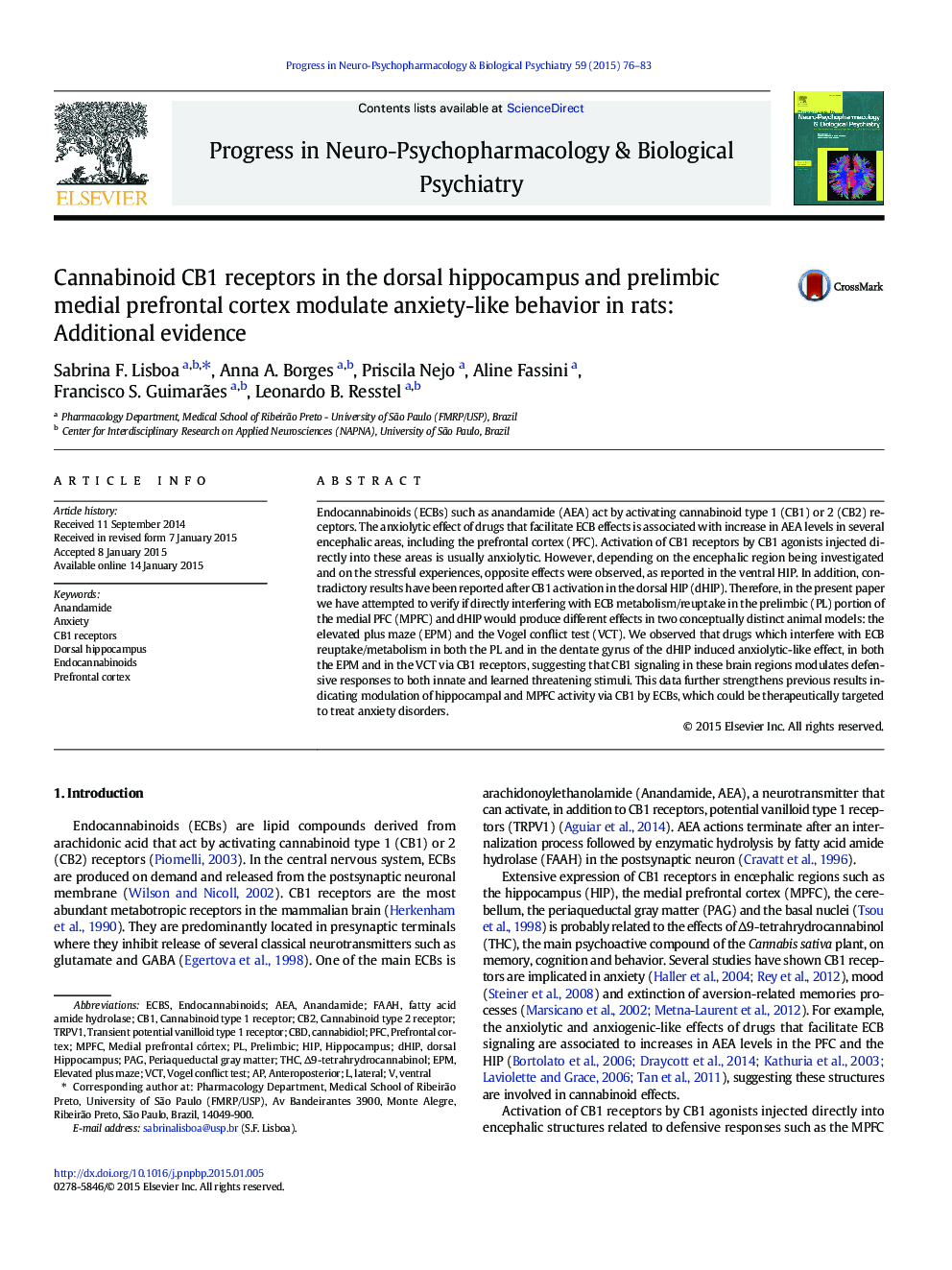| Article ID | Journal | Published Year | Pages | File Type |
|---|---|---|---|---|
| 5844393 | Progress in Neuro-Psychopharmacology and Biological Psychiatry | 2015 | 8 Pages |
Abstract
Endocannabinoids (ECBs) such as anandamide (AEA) act by activating cannabinoid type 1 (CB1) or 2 (CB2) receptors. The anxiolytic effect of drugs that facilitate ECB effects is associated with increase in AEA levels in several encephalic areas, including the prefrontal cortex (PFC). Activation of CB1 receptors by CB1 agonists injected directly into these areas is usually anxiolytic. However, depending on the encephalic region being investigated and on the stressful experiences, opposite effects were observed, as reported in the ventral HIP. In addition, contradictory results have been reported after CB1 activation in the dorsal HIP (dHIP). Therefore, in the present paper we have attempted to verify if directly interfering with ECB metabolism/reuptake in the prelimbic (PL) portion of the medial PFC (MPFC) and dHIP would produce different effects in two conceptually distinct animal models: the elevated plus maze (EPM) and the Vogel conflict test (VCT). We observed that drugs which interfere with ECB reuptake/metabolism in both the PL and in the dentate gyrus of the dHIP induced anxiolytic-like effect, in both the EPM and in the VCT via CB1 receptors, suggesting that CB1 signaling in these brain regions modulates defensive responses to both innate and learned threatening stimuli. This data further strengthens previous results indicating modulation of hippocampal and MPFC activity via CB1 by ECBs, which could be therapeutically targeted to treat anxiety disorders.
Keywords
AEAVCTeCBsdHIPCB2prelimbicFAAHPAGMPFCCB1CBDTRPV1PFCTHCEPMVogel Conflict TestanandamideAnxietyendocannabinoidselevated plus mazelateralprefrontal cortexmedial prefrontal cortexPeriaqueductal gray matterHIPHippocampusdorsal hippocampusventralanteroposteriorCannabidiolcannabinoid type 2 receptorCB1 receptorscannabinoid type 1 receptor
Related Topics
Life Sciences
Neuroscience
Biological Psychiatry
Authors
Sabrina F. Lisboa, Anna A. Borges, Priscila Nejo, Aline Fassini, Francisco S. Guimarães, Leonardo B. Resstel,
